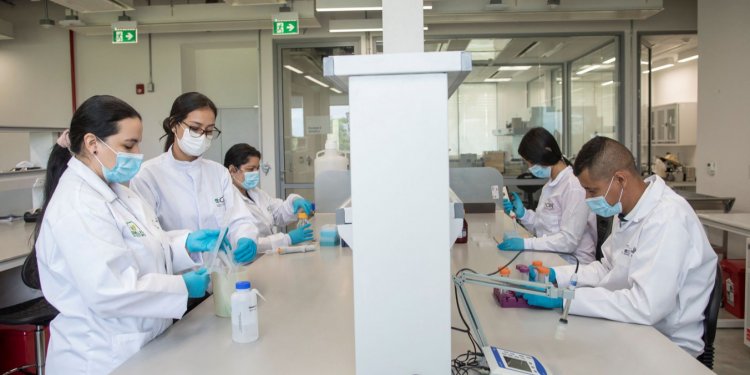Farming may be among the oldest professions in the world, but if it is to have any future it will increasingly need to rely on new technological breakthroughs to cope with the existential threat of climate change.
Around the world, rising temperatures are rapidly accelerating the sixth mass extinction, including the disappearance of staples that are critical to countries’ economies and food security. More than 70 wild relatives of the world’s most important crops, including maize, beans and potato, are at risk of being wiped out forever.
For those working to rescue crop biodiversity from its nadir and protect food systems from a future of extreme weather, the path forward is clear. Crop scientists must harness the new developments and tools that are emerging, including those from other disciplines, in the race to safeguard global food security and stem the rising tide of extinctions.
Faced with this dual challenge of preserving the world’s existing crops whilst developing hardier varieties to feed a warming world, scientists at facilities like the new Future Seeds genebank are increasingly making use of genomic sequencing, artificial intelligence and machine learning to future-proof our pool of agricultural resources.
By doing so, scientists are levelling the playing field in the fight against biodiversity loss, climate change and hunger, with a series of technological advances at the forefront.
“The world’s genebanks continue to be replenished before species with unique traits are lost”
For instance, AI-driven tools such as cutting-edge predictive technology can help scientists locate the last bastions of crop diversity, home to the dwindling number of wild relatives. This is critical for identifying and preserving these species before their ecosystems are lost to urbanisation or environmental stress.
Field experts can then target their collection efforts to these areas with greater accuracy and confidence, ensuring the world’s genebanks continue to be replenished with samples before species and varieties, each with unique advantageous traits, are lost for good.
Meanwhile, recent developments in human genomics have also produced more cost-effective tools for the sequencing of crops but cataloguing the plant growth and performance characteristics of crop species for disease and heat tolerance has traditionally been prohibitively expensive.
However, new AI tools can rapidly and efficiently analyse and categorise the abundance of data that is held by genebanks, as well as speeding up the collection process through the use of robotic sensors, satellite imagery and drones.
AI tools can then help scientists more readily pinpoint specific desirable traits, such as tolerance to heat, water stress or specific diseases, that can be used in the breeding of more resilient crops needed to weather the effects of climate change.
“Predictive technologies can project climate conditions in a specific region”
Finally, predictive technologies can also provide projections of localised climate conditions in a specific region, years from the present day. This can include, for example, whether a certain area is expected to receive more or less rainfall, or higher temperatures, which can dramatically impact how well-suited local crops are.
By using these projections, scientists can then more confidently identify locations with a similar climate today, allowing them to assess specific future needs based on the real-life climate and geographical data we already possess from the world around us. This can in turn guide the process for developing and breeding new varieties that are tailor-made for future conditions.
For decades, organisations like CIAT have played a crucial role in preserving an extensive collection of plant genetic material that can help researchers unlock the secrets to crops that ensure global food security amid the evolving challenges of global climate change.
New technologies, now under one roof at the Future Seeds genebank, offer scientists around the world the chance to do so with greater accuracy, speed and improved success, building a food system of the future with resilience built-in from the beginning.























